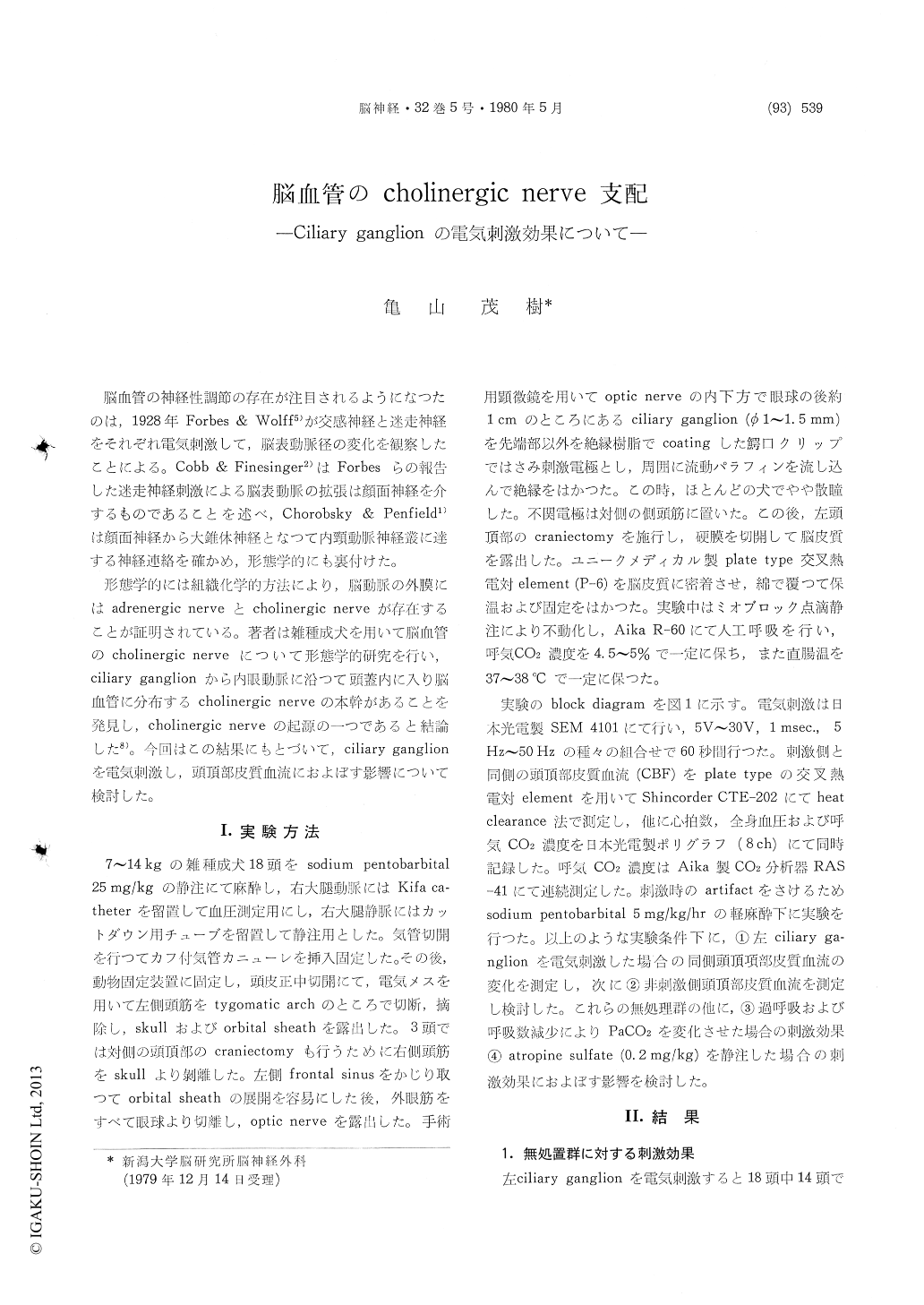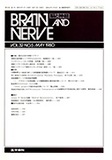Japanese
English
- 有料閲覧
- Abstract 文献概要
- 1ページ目 Look Inside
脳血管の神経性調節の存在が注目されるようになつたのは,1928年Forbes & Wolff5)が交感神経と迷走神経をそれぞれ電気刺激して,脳表動脈径の変化を観察したことによる。Cobb & Finesinger2)はForbesらの報告した迷走神経刺激による脳表動脈の拡張は顔面神経を介するものであることを述べ,Chorobsky & Penfield1)は顔面神経から大錐体神経となつて内頸動脈神経叢に達する神経連絡を確かめ,形態学的にも裏付けた。
形態学的には組織化学的方法により,脳動脈の外膜にはadrenergic nerveとcholinergic nerveが存在することが証明されている。著者は雑種成犬を用いて脳血管のcholinerglc nerveについて形態学的研究を行い,ciliary ganglionから内眼動脈に沿つて頭蓋内に入り脳血管に分布するcholinergic nerveの本幹があることを発見し,cholinergic nerveの起源の一つであると結論した8)。今回はこの結果にもとづいて,ciliary ganglionを電気刺激し,頭頂部皮質血流におよぼす影響について検討した。
There are many reports about experimental re-search on neurogenic control of the cerebral blood vessels, but very few report on cholinergic inner-vation of canine cerebral blood vessels. The auther reported that the thick cholinergic nerve bundle was observed along the internal ophthalmic artery and connecting with the postganglionic nervous network of the ciliary ganglion, suggesting that this nerve bundle was one of the origins of the cholinergic nerves on the canine cerebral arteries. On the basis of this data, we examined the re-sponses of cortical blood flow of the parietal region by electrical stimulation of the ciliary ganglion, while there had been no report of the electrical stimulation of the ciliary ganglion.
Regional cortical blood flow (CBF) of the ip-silateral parietal cortex of 18 mongrel dogs was measured with the heat clearance method under light pentobarbital anesthesia. Electrical stimula-tion of the ciliary ganglion increased CBF in 14 dogs, not changed in 2 dogs, and decreased transi-ently in 2 dogs. The optimal condition of elec-trical stimulation proved to be the square wave of 1 msec, 10 V and 10 Hz. CBF was increased after the latent period of 18±6 sec and gradually de-creased with the escape phenomenon. Arterial blood pressure and heart rate were transiently de-creased because of so-called Aschner's reaction, and the miosis was induced by electrical stimulation. CBF of the contralateral parietal cortex was not increased significantly by stimulation of the left ciliary ganglion.
Increase of CBF by electrical stimulation occured also under hyperventilation and hypoventilation, while it was prevented by administration of atro-pine (0.2 mg/kg) intravenously.
From our experimental data, we may conclude that the cholinergic nervous system which originates from the ciliary ganglion, innervates the cerebral blood vessels and increases cerebral blood flow with stimulation in the dog.

Copyright © 1980, Igaku-Shoin Ltd. All rights reserved.


